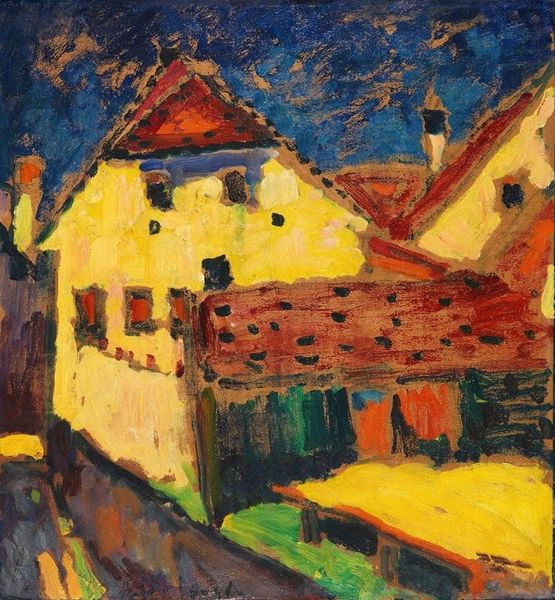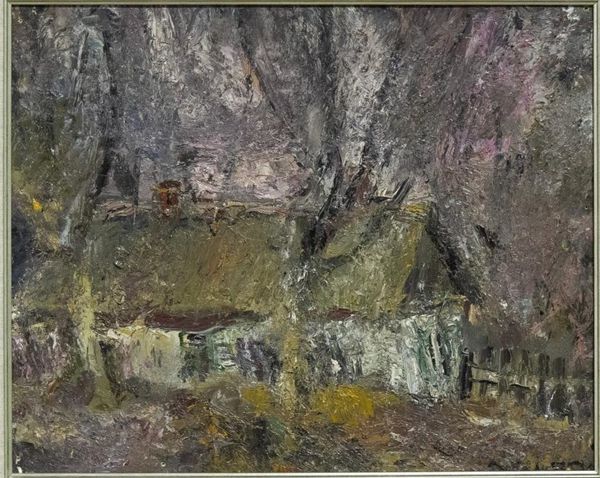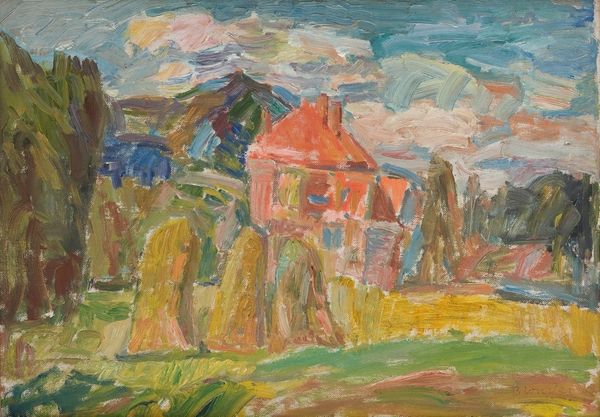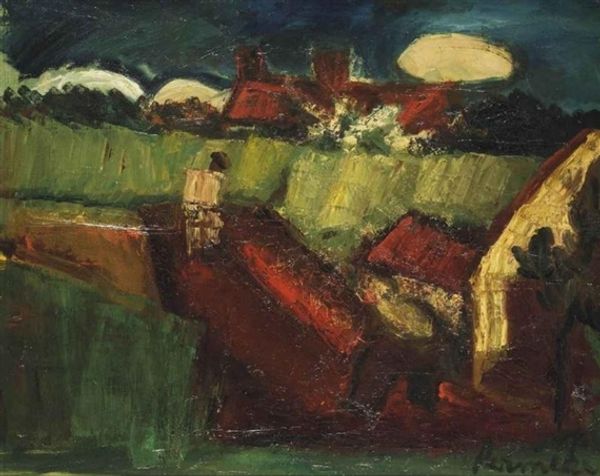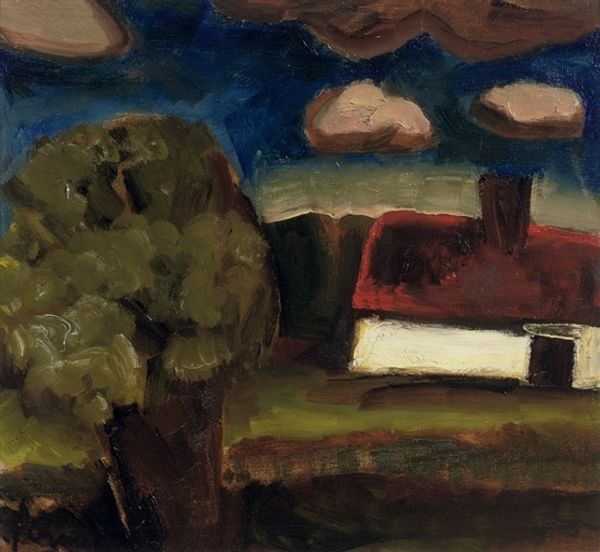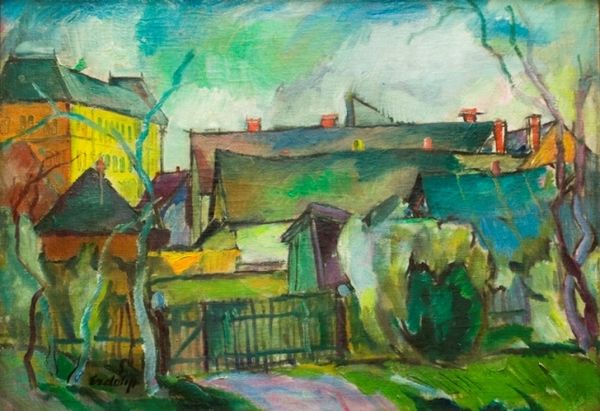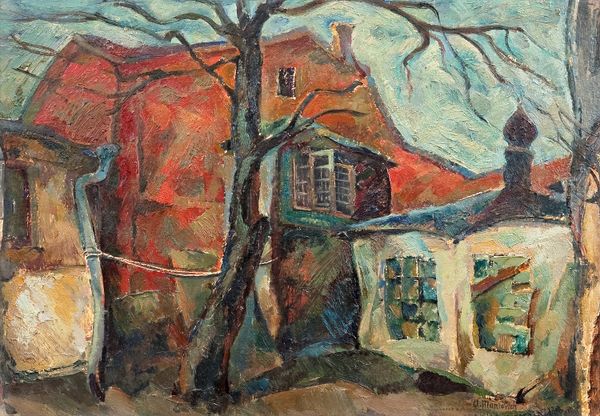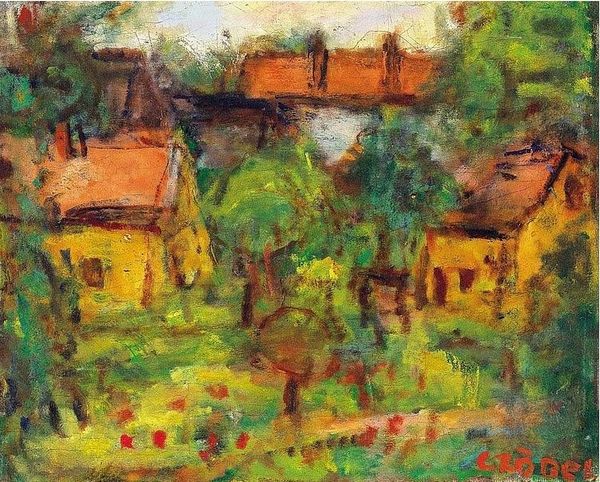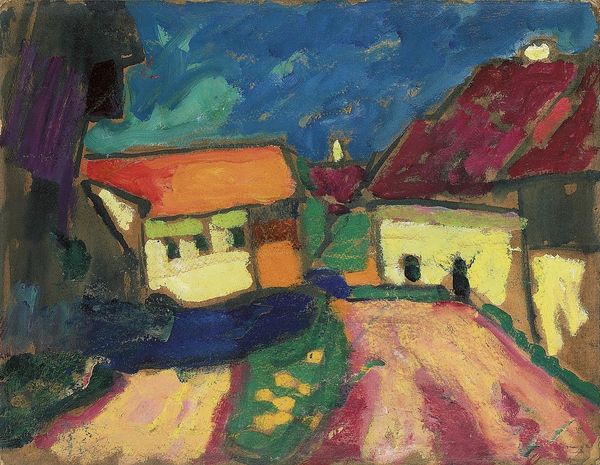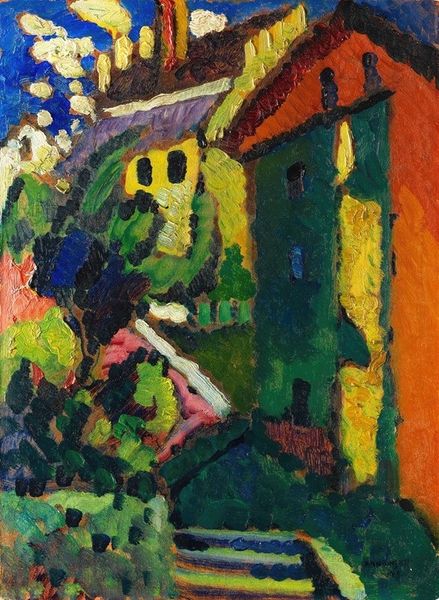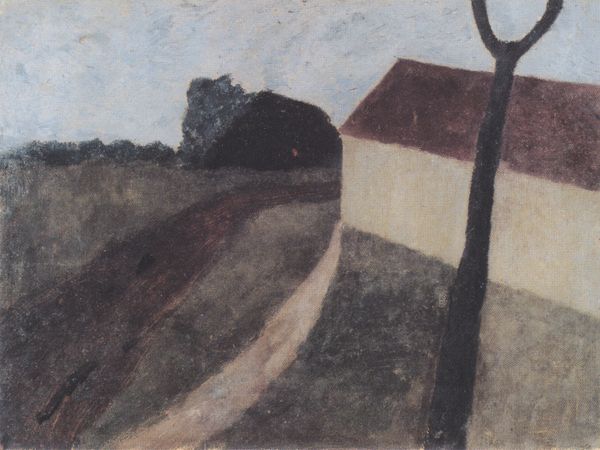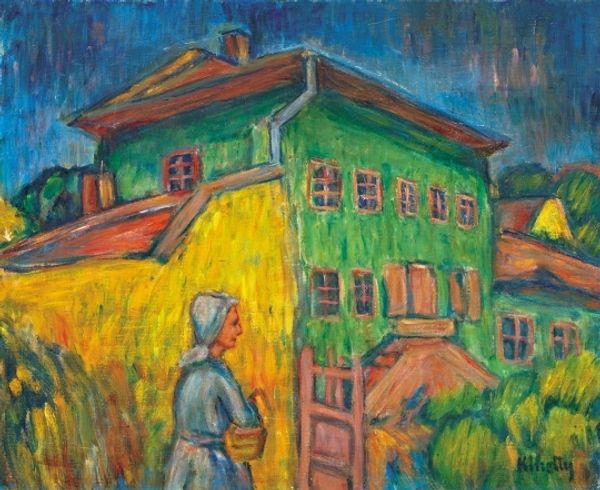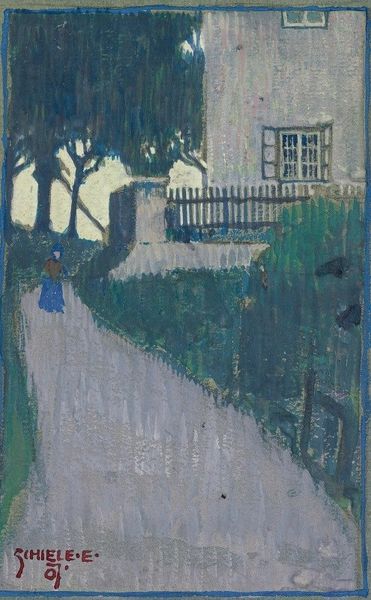
painting, oil-paint
#
painting
#
oil-paint
#
landscape
#
expressionism
#
cityscape
Copyright: Helen Dahm,Fair Use
Curator: I’m struck by the foreboding feeling I get from this cityscape. Editor: Indeed. This is Helen Dahm's "Brahmshaus in Rüschlikon," painted in 1928. Dahm was a Swiss artist associated with Expressionism. She rendered the piece in oil paint. I am particularly interested in her unconventional use of it. Curator: Unconventional is right. It’s a nighttime scene, seemingly quite humble, but there’s an anxiety here I can't shake. It has an isolating, haunting quality, doesn't it? Is it fair to describe it that way? Editor: Absolutely, and consider the Expressionist movement’s focus on the artist’s subjective emotional response to the world. The brushstrokes are thick, almost crude. I mean that in a positive sense; there's a raw materiality to the oil. The surface of the canvas almost looks labored. It emphasizes the sheer act of making. What impact do you believe the Brahmshaus residence might have had as it stood within the political and societal contexts of that moment? Curator: Well, I am tempted to view the dwelling and setting through a lens that takes into consideration both feminism and class dynamics. We should contemplate if it acted as a place of refuge, or a source of alienation and isolation. There’s that path leading right up to the door, but we as viewers are kept at a distance. We have this unsettling sense of trespass, and a certain ambiguity, leaving us wondering. The night sky is both menacing and sheltering, which in turn speaks to gendered themes of vulnerability and resilience. Editor: I agree about those dynamics of access and refuge. Thinking about her specific context—as a woman artist working with the physical substance of paint—one recognizes the challenges that the circumstances place upon both body and spirit. Dahm appears to be responding to the means, method and making—there is the cottage in the midst of its materiality and setting that transcends something almost tactile. What would you say that we should glean overall about the image's lasting resonance and importance? Curator: Well, for me, Dahm challenges conventional landscape art. It asks us to confront deeper questions about shelter, belonging, and our relationship with the world and society around us, as well as our subjective place within the political realities of the interwar period. Editor: From a material perspective, Dahm prompts reflection upon labor, process, and the powerful physicality inherent in both landscape and our own constructed realities.
Comments
No comments
Be the first to comment and join the conversation on the ultimate creative platform.
